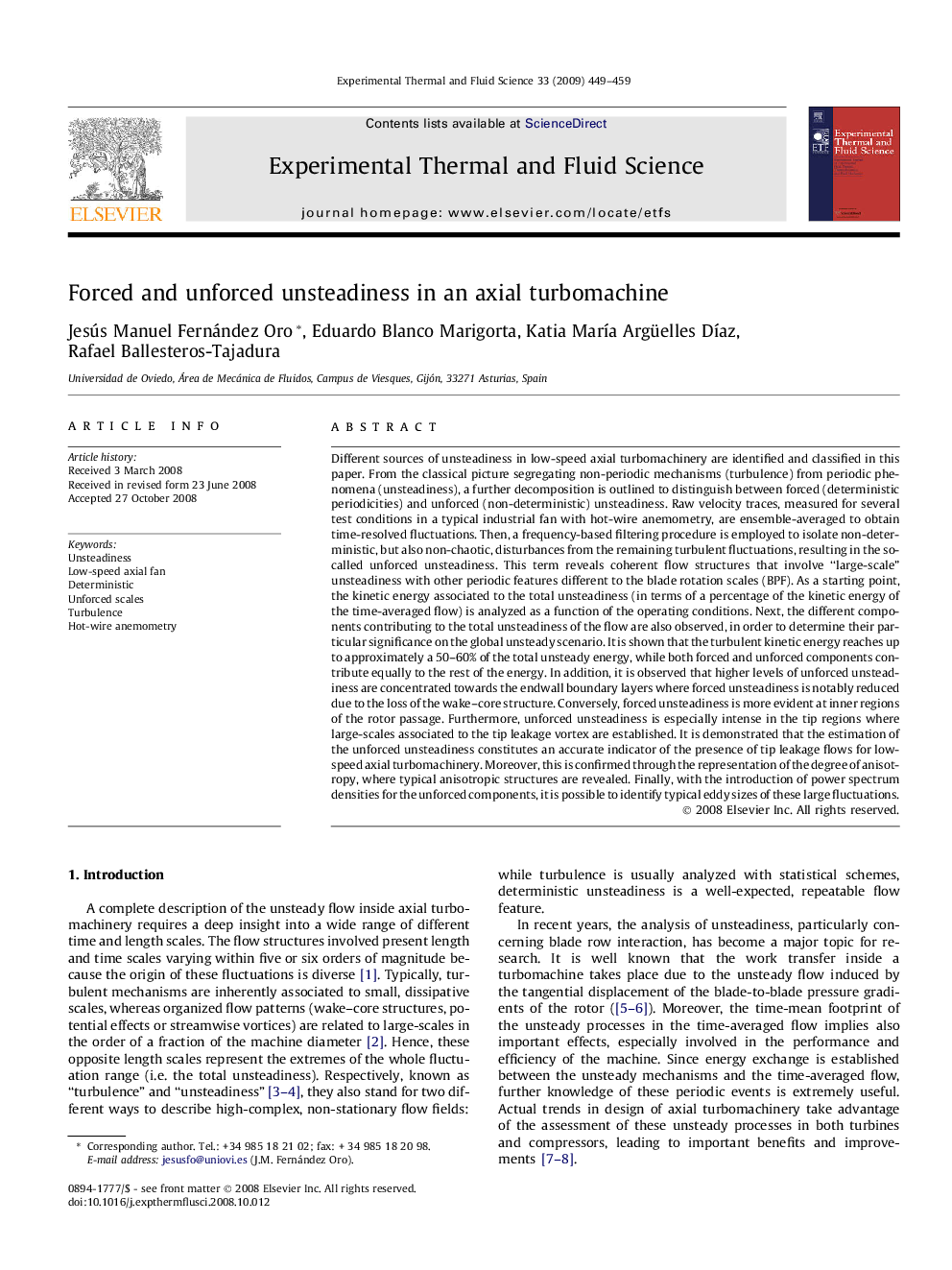| کد مقاله | کد نشریه | سال انتشار | مقاله انگلیسی | نسخه تمام متن |
|---|---|---|---|---|
| 652428 | 885020 | 2009 | 11 صفحه PDF | دانلود رایگان |

Different sources of unsteadiness in low-speed axial turbomachinery are identified and classified in this paper. From the classical picture segregating non-periodic mechanisms (turbulence) from periodic phenomena (unsteadiness), a further decomposition is outlined to distinguish between forced (deterministic periodicities) and unforced (non-deterministic) unsteadiness. Raw velocity traces, measured for several test conditions in a typical industrial fan with hot-wire anemometry, are ensemble-averaged to obtain time-resolved fluctuations. Then, a frequency-based filtering procedure is employed to isolate non-deterministic, but also non-chaotic, disturbances from the remaining turbulent fluctuations, resulting in the so-called unforced unsteadiness. This term reveals coherent flow structures that involve “large-scale” unsteadiness with other periodic features different to the blade rotation scales (BPF). As a starting point, the kinetic energy associated to the total unsteadiness (in terms of a percentage of the kinetic energy of the time-averaged flow) is analyzed as a function of the operating conditions. Next, the different components contributing to the total unsteadiness of the flow are also observed, in order to determine their particular significance on the global unsteady scenario. It is shown that the turbulent kinetic energy reaches up to approximately a 50–60% of the total unsteady energy, while both forced and unforced components contribute equally to the rest of the energy. In addition, it is observed that higher levels of unforced unsteadiness are concentrated towards the endwall boundary layers where forced unsteadiness is notably reduced due to the loss of the wake–core structure. Conversely, forced unsteadiness is more evident at inner regions of the rotor passage. Furthermore, unforced unsteadiness is especially intense in the tip regions where large-scales associated to the tip leakage vortex are established. It is demonstrated that the estimation of the unforced unsteadiness constitutes an accurate indicator of the presence of tip leakage flows for low-speed axial turbomachinery. Moreover, this is confirmed through the representation of the degree of anisotropy, where typical anisotropic structures are revealed. Finally, with the introduction of power spectrum densities for the unforced components, it is possible to identify typical eddy sizes of these large fluctuations.
Journal: Experimental Thermal and Fluid Science - Volume 33, Issue 3, March 2009, Pages 449–459